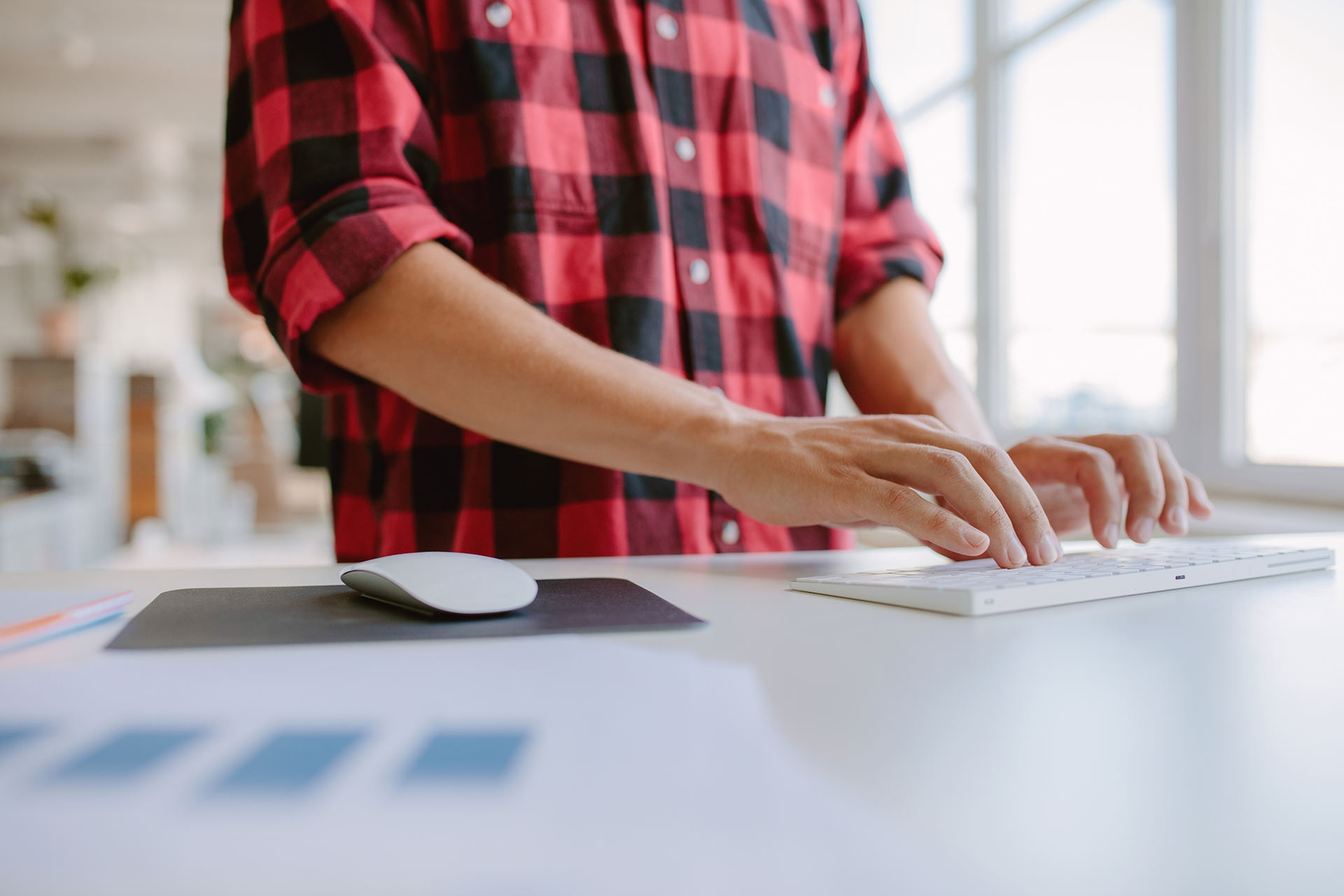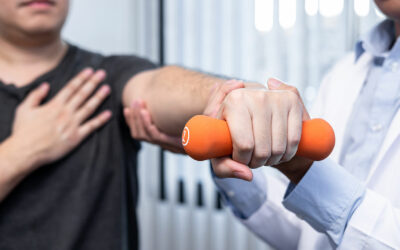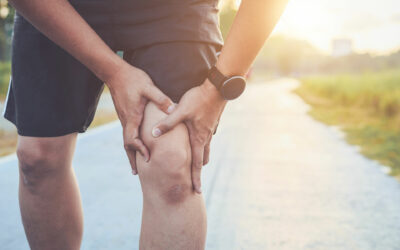Originally posted on Wellistic.com
Look at you, standing at your desk. Did you make the radical decision to eschew the norm and upgrade your workstation during quarantine? Or have you always liked the feeling of rising above your coworkers as they hunched and huddled over their too-low workspaces?
Maybe you’re just standing up for what you believe in: health and fitness.
A standing desk is not just a great way to boost productivity at work, but it’s also an opportunity to burn some extra calories and get a little pump in while you watch another presentation from the guy with the tropical island Zoom background and Hawaiian-style work-from-home shirt.
The best part about a standing desk is that you’re always ready for action. And since you’re not burdened by a cumbersome chair that takes up too much space and has literally no other use except for your office or home workspace, you have room to move. First, check out this great guide from the Mayo clinic on how to set up a standing desk correctly. Then check out our list of the best exercises to maximize the benefits of your standing desk.
SQUATS
Squats are a foundational exercise that can help ward off injury and fatigue by strengthening crucial muscle groups in your body, like your legs, your core, and your butt. A squat is a simple motion – after all, it’s one of the first moves mastered by toddlers learning to stand – but it does take practice to get it right. You can do a squat without weight and still reap enormous benefits to your body.
As you get in 10 or 20 air squats between phone calls, remember to keep your feet flat on the ground, and push up through your heels when you stand. Keep your head up! Don’t look at the ground while you squat – keep your eyes to the ceiling to keep your posture where it needs to be.
CALF RAISES
Have some old books or even a few empty Amazon boxes laying around? You can break them down and build yourself a cardboard step a few inches high. While you stand at your desk facing your workspace, align your makeshift step a few inches in front of the spot you usually stand so that you can step forward onto it easily.
Voila! Plant the base of your toes onto your new step and lift your heels as high as you desire. Hold for a second or two, lower your heels back down as far as you prefer, and lift again. Repeat until your Zoom coworkers ask if you’re riding a horse.
For a challenge, try doing one leg at a time. Alternatively, try facing backwards with your heel on the step and lift your toes while maintaining your balance.
CORE
Crunches are out – standing ab workouts are in! Did you know you can get a good burn on your core muscles without having to sit or lay down? Check out these knee-cross crunches and bring a little Richard Simmons flair to your coffee break. Whenever your knee or leg lifts in front of you, your abdominal muscles activate. Add in a little twist and an arm movement, and you’ll burn a few extra calories to offset all those extra snacks you have now that you’re working from the kitchen table.
Are you a natural huncher? It’s a lot easier to avoid bad posture when you’re standing, but it can still happen! Help out your core by keeping good posture – and that includes keeping your neck in line with your spine. Don’t let your jaw jut forward, which in turn forces your shoulders to do the same. We get it – it’s hard not to get drawn into the soft white glow of your laptop.
STRETCHES
While working at your standing desk, make sure you don’t lock your knees! This is a huge, avoidable mistake that you can make early on. By keeping your knees slightly bent, you allow your lower body muscles like your hips, thighs, and glutes to shift and absorb your weight instead of putting that exertion on your lower back.
You can also consider rotating some stretches throughout your standing workday to keep your muscles loose and limber. The lunge is an easy one to pull off while you work. Simply put one foot forward, keep your rear heel on the ground, and push your hips forward until you feel the muscles behind your thigh pull tight. Alternatively, you can swing your hips backward to feel a satisfying pull on the posterior muscles of your front leg.
Have an old yoga mat laying around? Get it under your feet for some extra cushion. While you’re at it, keep the hips and joints loose with some yoga-based stretches, like the triangle pose. Steady breathing is critical, and it will help settle your mind and keep you calm as you wait for your coworkers to log onto the next meeting.
Do standing desks still cause pain in your muscles and joints?
It’s been recommended that if you are switching to a standing desk – especially after decades of sitting – to do so gradually by starting with a half hour or an hour each day and increasing from there.
Remember, fitness is holistic. If you lead a sedentary life and spend more time sitting on a couch than you do walking or being active, you will have a hard time suddenly standing for several hours a day. Ease into it and take breaks throughout your day. While it can be difficult to find ways to remain active while working from home, utilizing a standing desk can be a great place to start!



